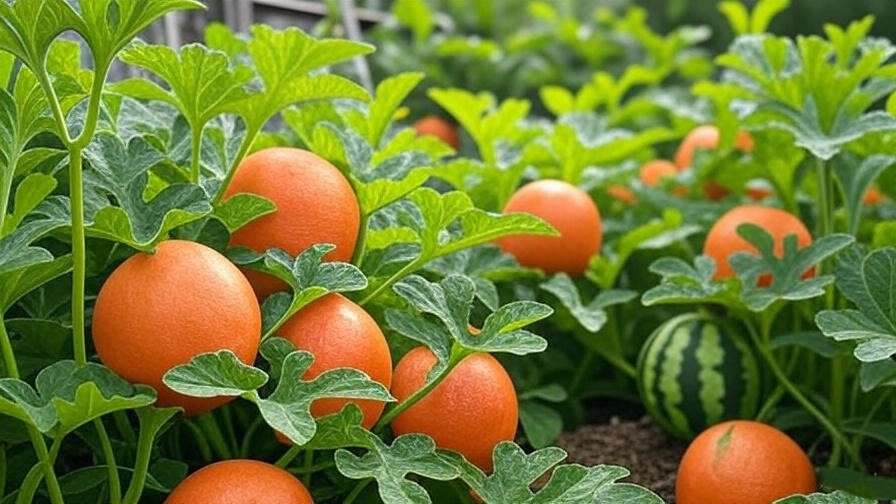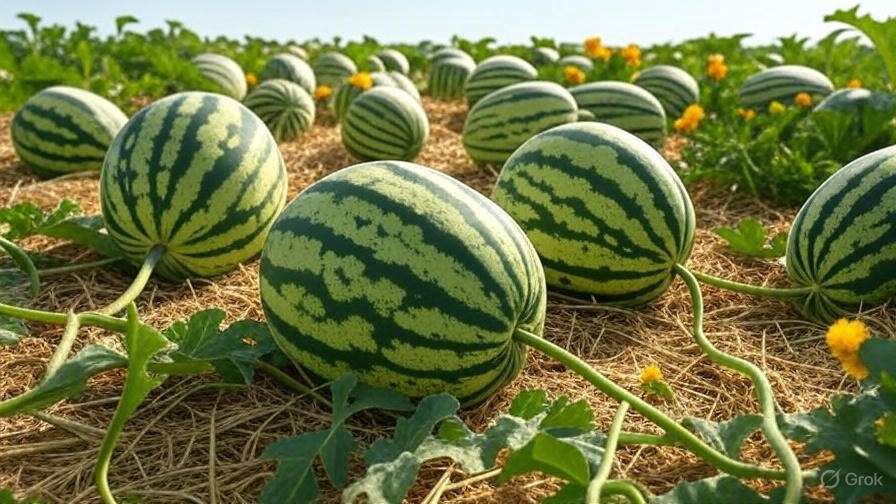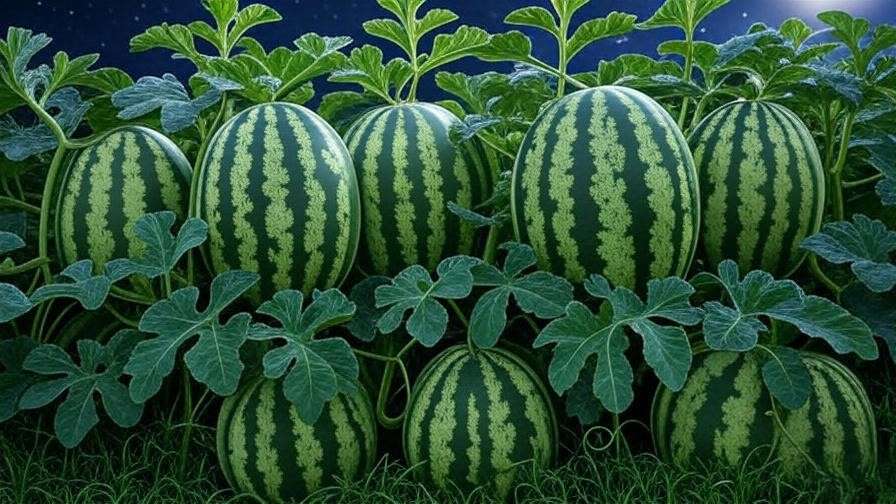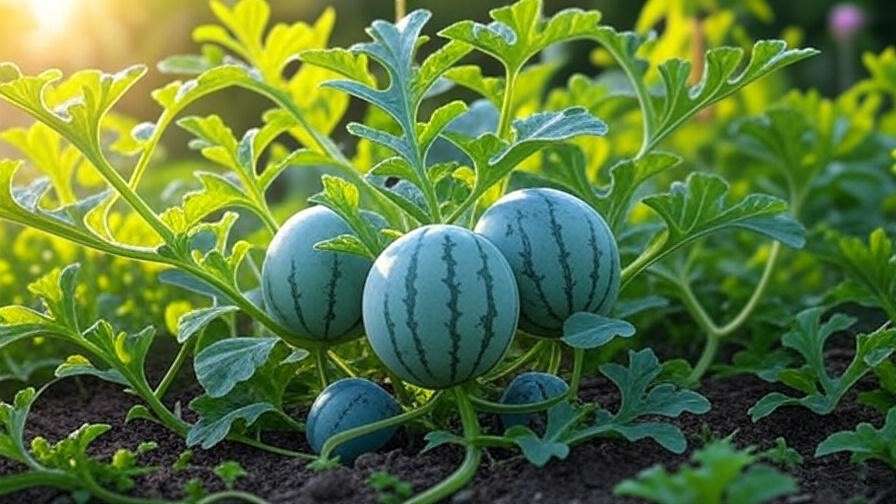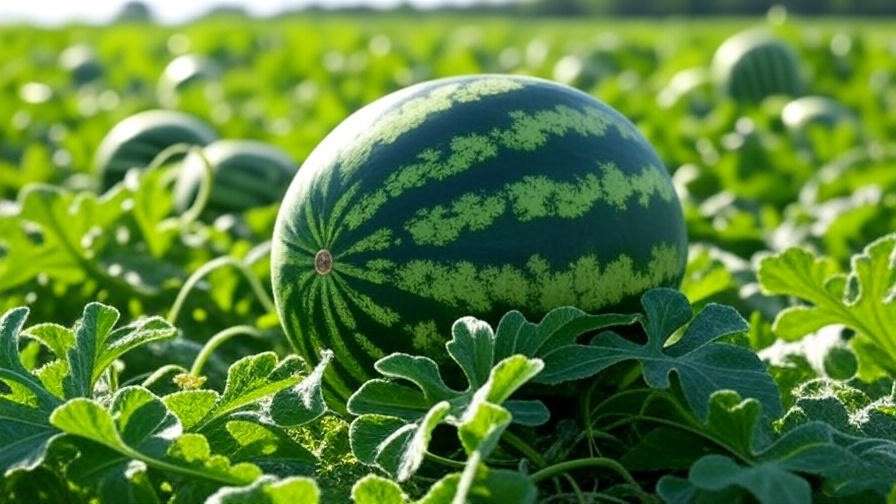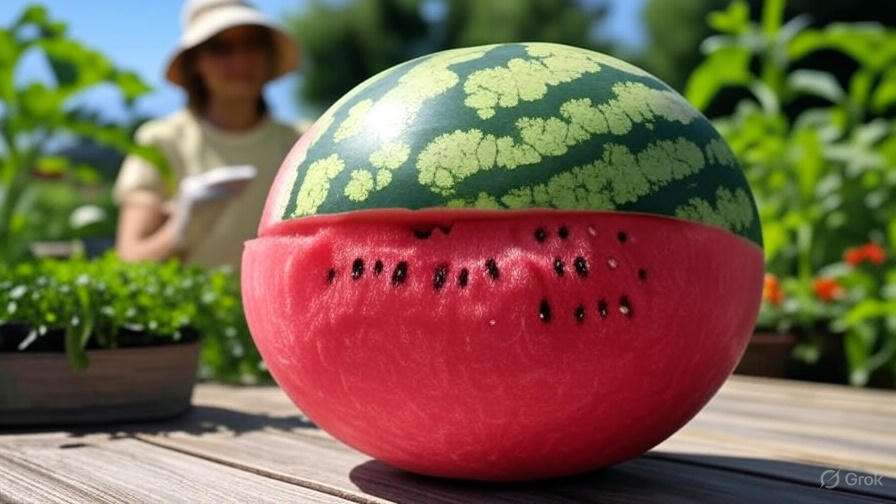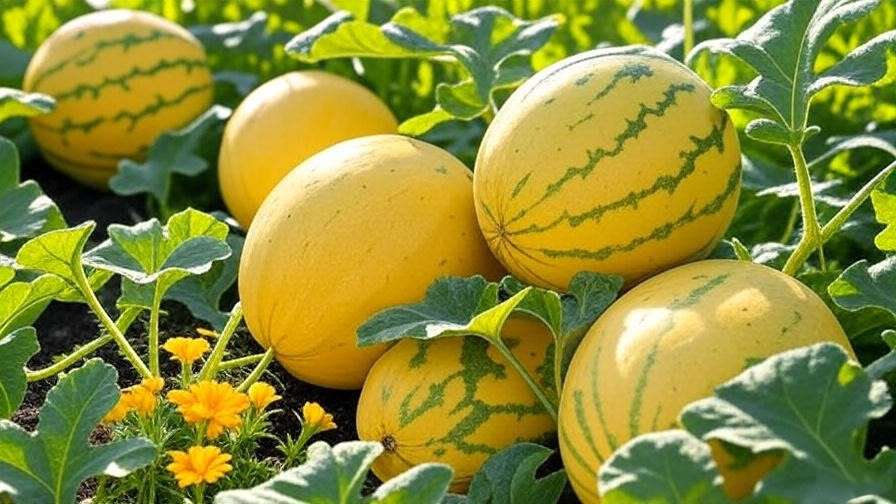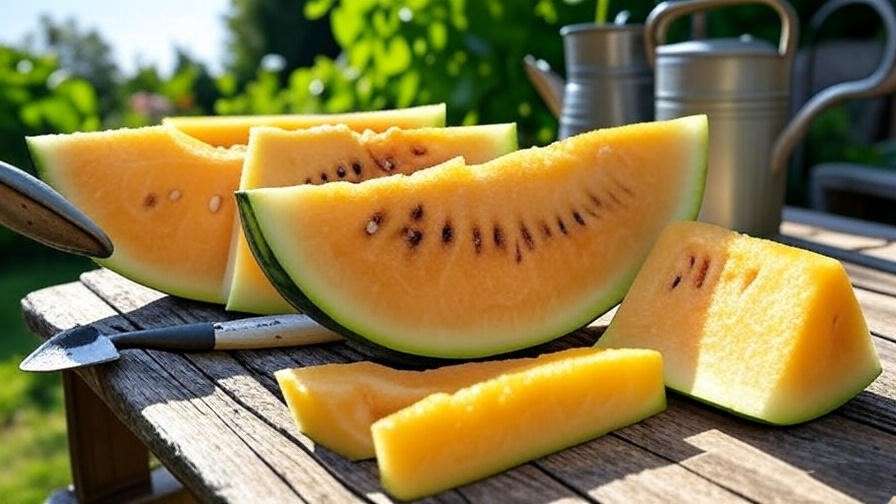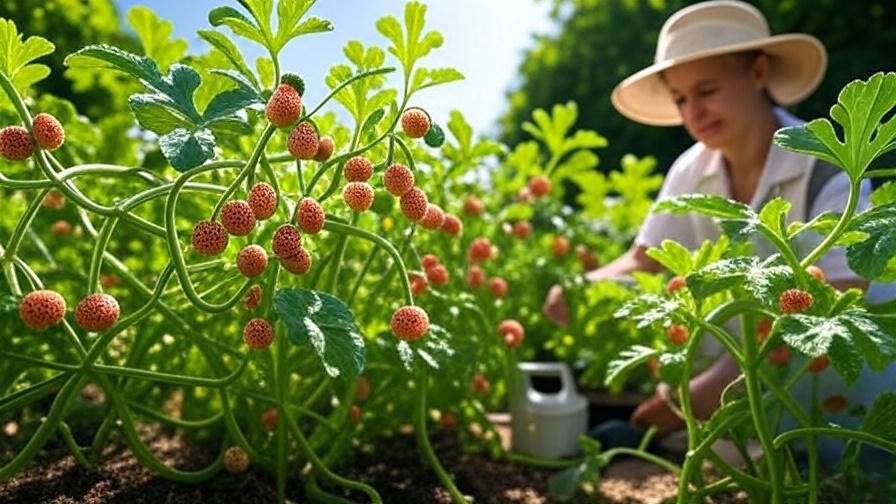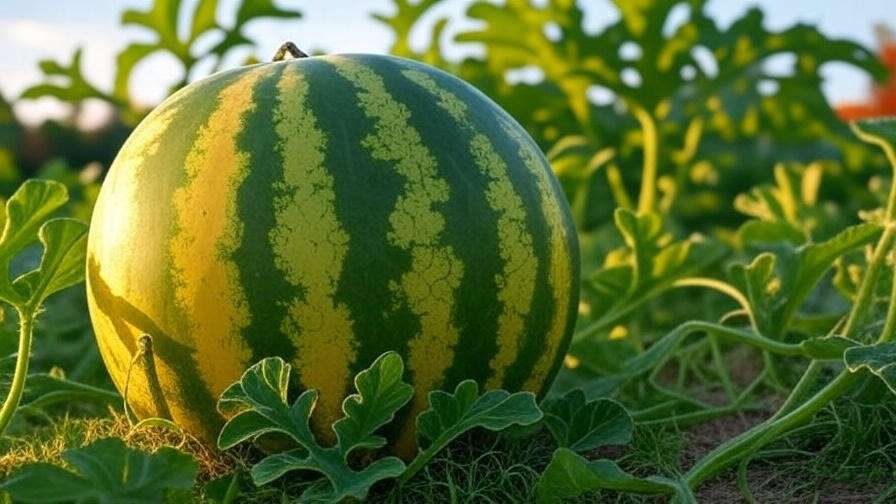Imagine slicing into a vibrant, orange-fleshed Orangeglo watermelon, its sweet, juicy flavor bursting with summer goodness—grown right in your backyard! 🌞 This heirloom variety, known for its unique color and exceptional taste, is a favorite among gardeners seeking something extraordinary. Whether you’re a novice or a seasoned grower, this comprehensive guide will walk you through every step to cultivate thriving Orangeglo watermelons. Backed by years of horticultural expertise and research from leading agricultural institutions, this article provides actionable tips to ensure a bountiful harvest. Let’s dive into the art and science of growing this delightful fruit! 🌿
Section 1: Understanding the Orangeglo Watermelon 🌟
What Makes the Orangeglo Watermelon Special?
The Orangeglo watermelon stands out in the world of melons with its striking orange flesh, crisp texture, and honey-like sweetness. This heirloom variety, often grown in home gardens and showcased at farmers’ markets, traces its roots to traditional breeding practices, making it a cherished choice for those who value heritage crops. Unlike common red-fleshed watermelons, the Orangeglo’s vibrant hue and rich flavor make it a conversation starter. Its medium-sized fruits, typically weighing 15-25 pounds, are perfect for small families or sharing with neighbors.
Nutritional Benefits and Culinary Uses
Orangeglo watermelons are not just a treat for the taste buds—they’re packed with nutrition. Rich in vitamins A and C, they support immune health and skin vitality. Their high water content (over 90%) makes them a hydrating snack, while antioxidants like lycopene promote heart health. In the kitchen, Orangeglo watermelons shine in fresh slices, smoothies, or fruit salads. For a gourmet twist, pair them with fresh mint or feta cheese for a refreshing summer dish. Expert Tip: Blend Orangeglo watermelon with lime juice for a vibrant, hydrating sorbet!
Section 2: Preparing to Grow Orangeglo Watermelons 🌍
Choosing the Right Environment
Orangeglo watermelons thrive in warm, sunny climates, making them ideal for USDA zones 4-11 with a long growing season (80-100 days). They demand well-draining, fertile soil with a pH between 6.0 and 6.8. Test your soil using a home kit or send a sample to your local extension service for precise results. Full sun exposure—6 to 8 hours daily—is non-negotiable for robust vine growth and sweet fruit. If your garden has heavy clay or sandy soil, amend it with compost to improve drainage and nutrient retention.
Selecting Quality Seeds or Seedlings
Start with high-quality Orangeglo watermelon seeds from reputable suppliers like Baker Creek Heirloom Seeds or Johnny’s Selected Seeds. Opt for non-GMO, heirloom seeds to ensure authenticity and flavor. If using seedlings, choose ones with sturdy stems and vibrant green leaves, avoiding any with yellowing or wilting. Expert Insight: Heirloom seeds preserve the Orangeglo’s unique traits, unlike hybrid varieties that may prioritize shelf life over taste. Check for certifications from seed banks to guarantee quality.
Timing Your Planting
Timing is critical for Orangeglo watermelons. Plant seeds or seedlings after the last frost when soil temperatures reach at least 70°F (21°C). In northern climates, this may be late spring (May-June), while southern regions can start as early as March. Use a soil thermometer to confirm conditions. For a quick reference, here’s a planting guide:
| Region | Planting Window |
| Northern (Zones 4-6) | Mid-May to June |
| Central (Zones 7-8) | April to May |
| Southern (Zones 9-11) | March to April |
Section 3: Planting Orangeglo Watermelons Step-by-Step 🌱
How to Plant Orangeglo Watermelon Seeds
- Prepare the Soil: Work in 2-3 inches of compost or well-rotted manure to enrich the soil. Break up clumps to ensure a loose, aerated texture.
- Create Mounds or Rows: Form mounds 6-8 feet apart or rows with similar spacing to promote drainage and give vines room to sprawl.
- Sow Seeds: Plant seeds 1 inch deep, placing 2-3 seeds per hole. Space holes 2-3 feet apart within rows or mounds.
- Water and Mulch: Water thoroughly after planting, then apply a 2-inch layer of straw or organic mulch to retain moisture and suppress weeds.
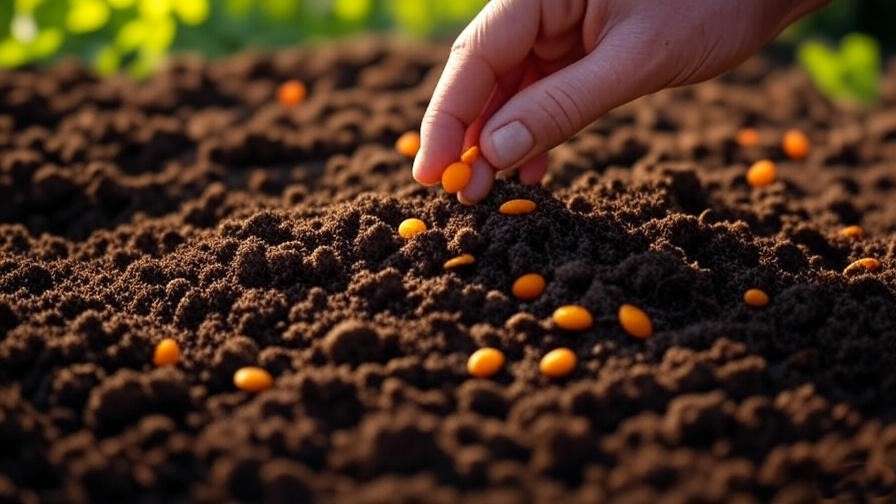
Transplanting Seedlings
If starting with seedlings, harden them off by exposing them to outdoor conditions for 7-10 days. Transplant on a cloudy day to reduce stress. Dig a hole slightly larger than the root ball, place the seedling, and backfill with soil. Water immediately to settle the roots. Tip: Avoid disturbing the roots during transplanting to prevent shock.
Space and Support Considerations
Orangeglo watermelon vines are vigorous, spreading up to 10-15 feet. Allow 6-8 feet between rows to prevent overcrowding. For small gardens, consider trellising with sturdy supports like A-frames or cattle panels. Trellised plants produce cleaner fruit and save space but require slings to support heavy melons. A simple planting layout diagram can help visualize spacing:
- [Insert placeholder for diagram: Rows 6-8 feet apart, plants 2-3 feet apart within rows]
Section 4: Caring for Your Orangeglo Watermelon Plants 🌿
Watering and Irrigation Best Practices
Consistent watering is key to juicy Orangeglo watermelons. Provide 1-2 inches of water per week, adjusting for rainfall. Water deeply at the base, avoiding foliage to prevent fungal issues. Drip irrigation is ideal for even moisture distribution, but hand-watering works if done carefully. Watch for signs of overwatering, such as yellowing leaves or soggy soil, which can lead to root rot. Pro Tip: Reduce watering slightly as fruits ripen to concentrate sugars for sweeter melons.
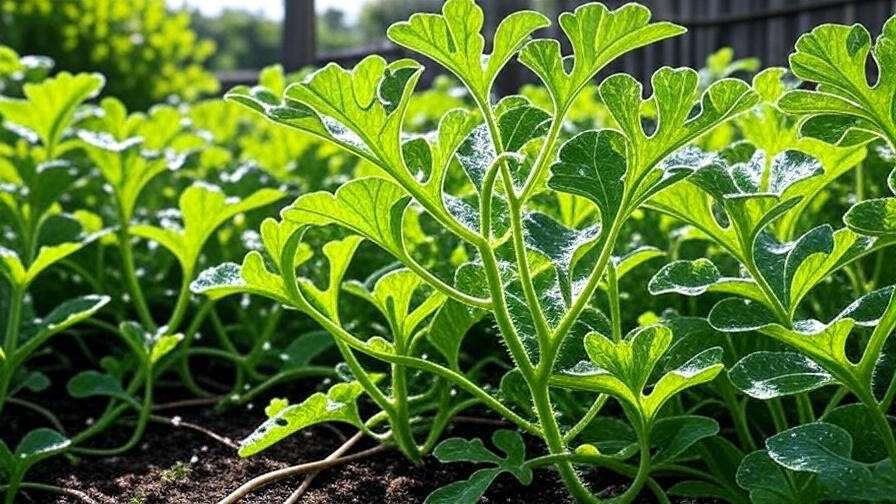
Fertilizing for Optimal Growth
Feed Orangeglo watermelons with a balanced fertilizer (10-10-10 NPK) or organic compost. Apply at three stages:
- At Planting: Mix a slow-release fertilizer into the soil.
- During Vine Growth: Side-dress with compost or a nitrogen-heavy fertilizer when vines begin to spread.
- At Fruit Set: Use a phosphorus-rich fertilizer to support fruit development.
Expert Tip: Apply fish emulsion every 2-3 weeks during flowering for a nutrient boost that enhances fruit quality.
Pruning and Vine Management
Pruning improves air circulation and directs energy to fruit production. Remove secondary vines (those not bearing fruit) and damaged or yellowing leaves. For trellised plants, secure vines to supports with soft ties. Use fabric slings or old t-shirts to cradle heavy fruits, preventing them from snapping off. Regular pruning also reduces pest and disease risks by keeping the plant tidy.
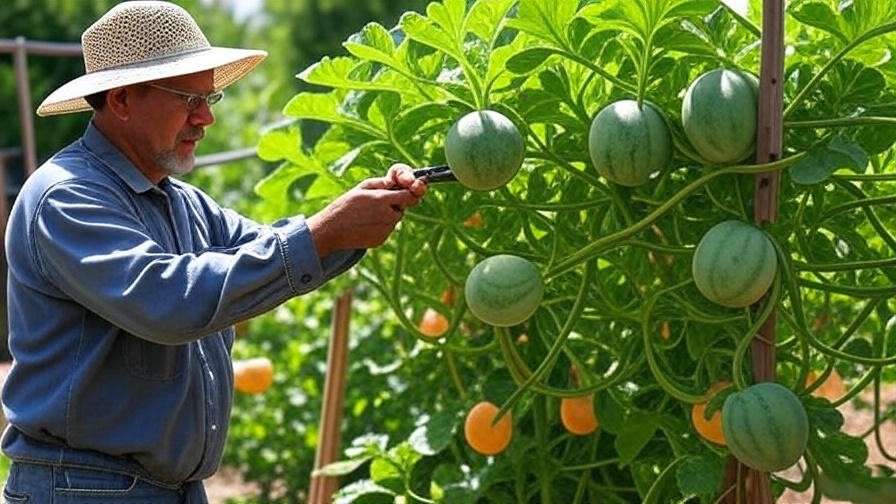
Section 5: Protecting Your Orangeglo Watermelons from Pests and Diseases 🐞
Common Pests and How to Manage Them
Orangeglo watermelons attract pests like aphids, cucumber beetles, and spider mites. Monitor plants weekly for signs of damage, such as chewed leaves or sticky residue. Organic control methods include:
- Neem Oil: Spray diluted neem oil to deter pests.
- Companion Planting: Grow marigolds or nasturtiums nearby to repel insects.
- Beneficial Insects: Introduce ladybugs to control aphid populations.
Expert Insight: Early detection is critical—check the undersides of leaves where pests often hide.
Preventing and Treating Diseases
Common diseases include powdery mildew (white patches on leaves), fusarium wilt (wilting vines), and anthracnose (dark spots on fruit). Prevent these with:
- Crop Rotation: Avoid planting watermelons in the same spot for 3-4 years.
- Proper Spacing: Ensure good air circulation to keep foliage dry.
- Resistant Varieties: While Orangeglo is heirloom, pair with resistant companion crops.
For treatment, apply organic fungicides like sulfur for powdery mildew or remove affected plants to prevent spread.
Section 6: Harvesting and Storing Orangeglo Watermelons 🍈
When and How to Harvest
Harvest Orangeglo watermelons when fully ripe for peak flavor. Look for these signs:
- The underside (where the melon rests on the ground) turns yellow.
- The rind loses its glossy shine and feels slightly rough.
- Tapping the melon produces a hollow, drum-like sound.
Use clean shears to cut the stem, leaving 2 inches attached. Harvest in the morning when temperatures are cooler to preserve freshness.
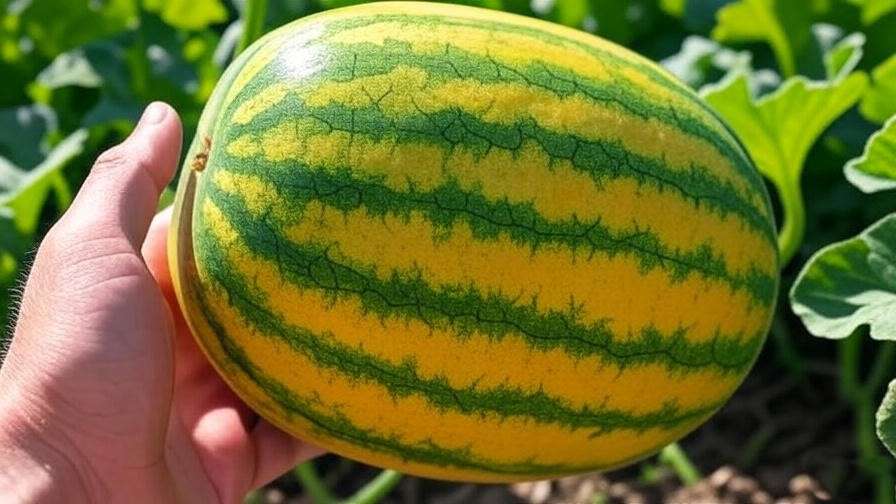
Storing Your Watermelons
Store whole Orangeglo watermelons at room temperature (65-75°F) for up to 2 weeks. For longer storage, refrigerate at 45-50°F for up to a month, but avoid prolonged chilling to prevent texture loss. Cut melons should be wrapped tightly or stored in airtight containers to maintain juiciness. Expert Tip: Slice only what you need and refrigerate leftovers promptly to extend shelf life.

Section 7: Troubleshooting Common Orangeglo Watermelon Problems 🔧
Why Isn’t My Watermelon Plant Producing Fruit?
If your Orangeglo watermelon vines are lush but fruitless, several factors could be at play. Poor pollination is a common culprit, especially in areas with low bee activity. To remedy this, try hand-pollination: use a small brush to transfer pollen from male flowers (thin-stemmed) to female flowers (with a small bulb at the base). Nutrient deficiencies, particularly low phosphorus or potassium, can also hinder fruit set. Conduct a soil test through your local extension service and amend with a balanced fertilizer if needed. Insufficient sunlight—less than 6 hours daily—can stunt fruit development, so ensure your plants are in a sunny spot. Quick Fix: Attract pollinators by planting bee-friendly flowers like lavender or borage nearby.
Addressing Small or Tasteless Fruit
Small or bland Orangeglo watermelons often result from overcrowding, inconsistent watering, or premature harvesting. Overcrowded vines compete for nutrients, producing undersized fruit. Ensure proper spacing (2-3 feet between plants, 6-8 feet between rows) to give each vine ample resources. Inconsistent watering—too much or too little—can dilute flavor. Maintain a steady schedule of 1-2 inches per week, reducing slightly as fruits ripen to concentrate sugars. Harvesting too early is another issue; wait for the telltale signs of ripeness (yellow underside, dull rind, hollow sound). Below is a troubleshooting table for quick reference:
| Issue | Possible Cause | Solution |
| Small fruit | Overcrowding, nutrient deficiency | Adjust spacing, fertilize with phosphorus |
| Tasteless fruit | Overwatering, early harvest | Reduce watering, wait for ripeness signs |
| No fruit | Poor pollination, low sunlight | Hand-pollinate, ensure full sun exposure |
Section 8: Expert Tips for Maximizing Your Orangeglo Watermelon Yield 🚀
To take your Orangeglo watermelon harvest to the next level, incorporate these expert strategies:
- Companion Planting: Pair watermelons with beans or corn to improve soil nitrogen levels and deter pests. Avoid planting near potatoes, which can attract similar pests.
- Mulching Benefits: Apply a 2-3 inch layer of straw, wood chips, or black plastic mulch to suppress weeds, retain soil moisture, and regulate soil temperature. Black plastic also warms the soil, speeding up early growth in cooler climates.
- Pollinator Attraction: Plant pollinator-friendly flowers like lavender, sunflowers, or marigolds to boost bee activity, ensuring better fruit set. A thriving pollinator population can increase yields by up to 20%, according to university studies.
- Case Study: In 2023, a Virginia gardener reported a record-breaking Orangeglo harvest by using drip irrigation and companion planting with marigolds. Her secret? Consistent soil moisture and weekly applications of compost tea during the growing season. This approach yielded 10 melons averaging 20 pounds each from just three plants!
Section 9: FAQs About Growing Orangeglo Watermelons ❓
Q1: How long does it take for Orangeglo watermelons to mature?
A: Orangeglo watermelons typically take 80-100 days from planting to harvest, depending on climate and growing conditions. Warm regions may see faster maturation (closer to 80 days), while cooler climates may require the full 100 days.
Q2: Can I grow Orangeglo watermelons in containers?
A: Yes, but choose large containers (at least 20-25 gallons) with excellent drainage. Use a trellis to support vines and slings for fruits. Ensure consistent watering and full sun exposure.
Q3: What’s the best way to save Orangeglo watermelon seeds?
A: Select a fully ripe melon, scoop out the seeds, and rinse them thoroughly to remove pulp. Dry the seeds on a paper towel for 5-7 days in a cool, well-ventilated area. Store in an airtight container in a cool, dry place.
Q4: Why are my watermelon leaves turning yellow?
A: Yellowing leaves may indicate overwatering, nutrient deficiency (especially nitrogen), or disease like fusarium wilt. Check soil moisture, test soil nutrients, and inspect for disease symptoms.
Q5: How can I tell if my watermelon is overwatered?
A: Signs include soggy soil, yellowing or wilting leaves, and soft, mushy roots. Reduce watering and improve drainage with raised beds or mounds.
Conclusion
Growing Orangeglo watermelons is a rewarding journey that combines horticultural skill with the joy of harvesting sweet, vibrant fruit. By choosing the right environment, planting with care, managing pests and diseases, and following expert tips, you can cultivate a thriving crop that impresses both your taste buds and your neighbors. 🌞 This guide, informed by years of gardening experience and research from sources like the USDA and university extension services, equips you with everything you need to succeed. Start your Orangeglo watermelon adventure today, and share your progress in the comments below! For more plant care insights, explore our guides on heirloom crops and organic gardening. 🌱


